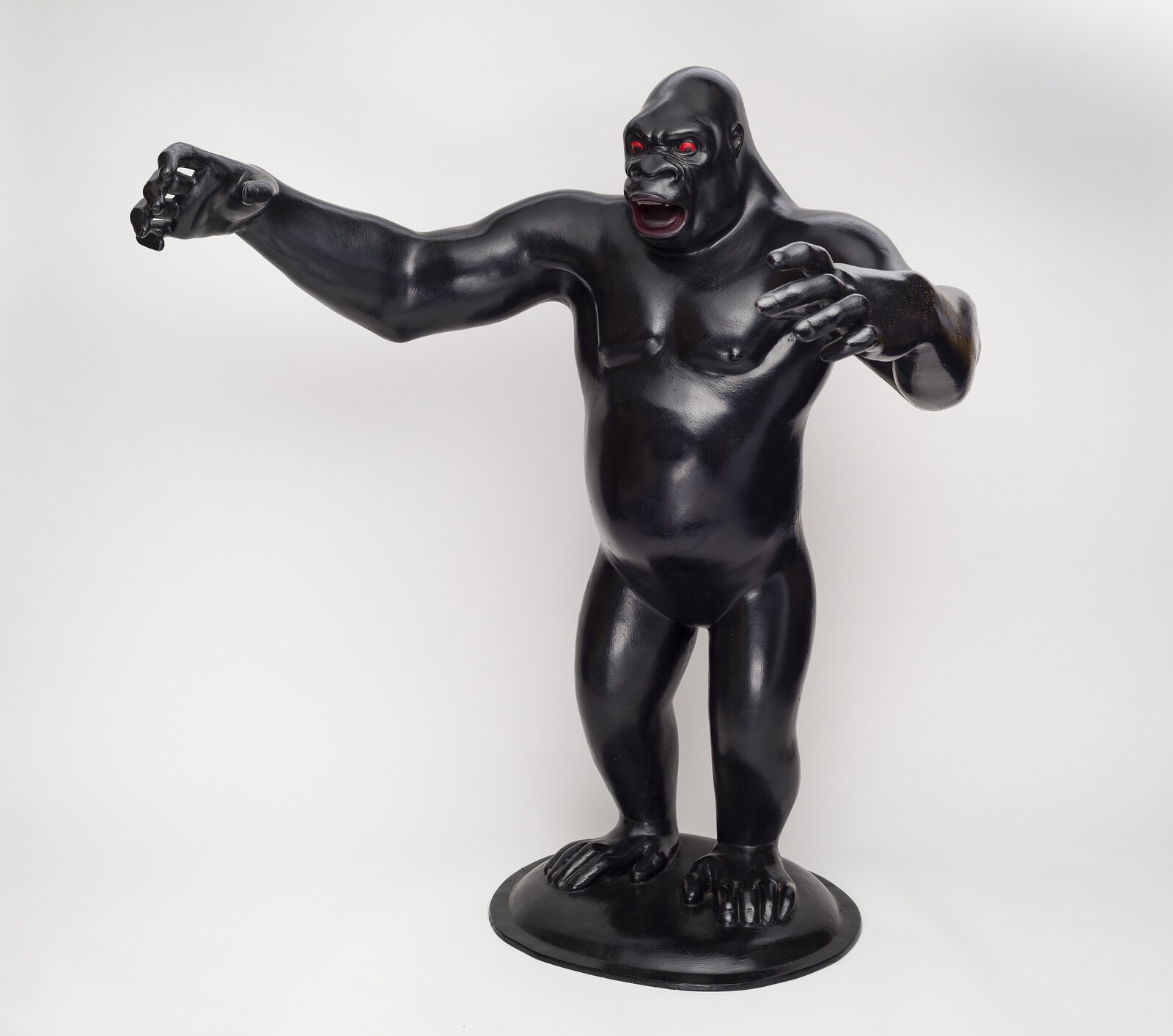The Henry Moore Institute is a centre for the study of sculpture, a part of The Henry Moore Foundation. Throughout the year we produce exhibitions, conferences, lectures and publications, and offer research support through our library, archives, sculpture collection and Visiting Research Fellowships. Our 2016-17 exhibitions focus on sculpture’s relationship to the body, science, memorial and public space, and are accompanied by a lively programme of events.
Olga Jevrić: Proposals for Monuments
February 3–April 17, 2016
During the 1950s and 1960s Serbian artist Olga Jevrić (1922–2014) created a series of unrealised small-scale models for monumental public memorial sculptures in response to national competitions. Rubbing against the traditions of her country, Jevrić chose abstract sculpture over figuration. In the first showing of Jevrić’s work in the UK for nearly half a century, this focused selection presents a mass of her sculptural experiments exploring scale, texture and the relationship of solid material to empty space. Inspired by medieval tombstones, and made from concrete and iron dust, her proposals are abstract volumetric forms small enough to fit in the hand, yet suggesting sculptures of monumental proportions.
A Lesson in Sculpture with John Latham
March 24–June 19, 2016
John Latham (1921–2006) rethought the limits and possibilities of art. A polymath who refused to be pigeonholed, Latham’s experimental artworks and processes opened dialogues between art and society. A Lesson in Sculpture with John Latham addresses his visionary contribution to the study of sculpture, bringing sixteen works by Latham, spanning 1958 to 1992, into conversation with sixteen sculptures by artists working across the 20th and 21st centuries. These artists include Marcel Broodthaers, Mary Kelly, Annea Lockwood, Josiah McElheny, Cornelia Parker, Katie Paterson, Michelangelo Pistoletto and Carey Young, with the exhibition being structured around three provocations: material transformations, matter, physics and process and monuments to labour.
William Hamo Thornycroft’s Charity and Justice
May 18–August 21, 2016
Hamo Thornycroft (1850–1925) was a key figure in the New Sculpture Movement, a nineteenth-century grouping of young artists who sought to reinvigorate sculpture. Born into a family of sculptors, he was immersed in the practice and business of sculpture from an early age. In 1888 he was commissioned to make a memorial to General Charles Gordon, comprising a bronze statue standing over three metres high on a pedestal measuring nearly five and a half metres tall holding two bronze reliefs—one of which is Charity and Justice (1888). Presenting the plaster version and archival material, this display reveals the sculptor’s preoccupations with the potential of drapery to breathe life and movement into a figurative composition.
The Body Extended: Sculpture and Prosthetics
July 21–October 23, 2016
Concerned with the material, the human and the sculptural, this exhibition traces how artists have addressed radical changes to the very thing humans know best: our bodies. Focusing on analogue augmentations, The Body Extended: Sculpture and Prosthetics addresses the ways the body came to be reconstructed and rethought in culture in the wake of the First World War. Alongside facial prosthetics by sculptors Francis Derwent Wood and Anna Coleman Ladd and material from medical history collections, it presents a range of artworks pointing to the fears and possibilities of the technologised human. It includes the supports and extensions of Charles and Ray Eames and Walter Pichler, the warnings of the automated human by Heinrich Hoerle and Jacob Epstein, the limbs of Louise Bourgeois and Matthew Barney and a new sculpture by Rebecca Warren, co-commissioned with 14-18 NOW: WW1 Centenary Art Commissions, located directly outside the Institute building on the city’s busiest thoroughfare.
Eleanor Antin: Carving: A Traditional Sculpture, 1972
September 28, 2016–January 1, 2017
This “traditional sculpture” is a landmark work in the history of conceptual art. Over 37 days American artist Eleanor Antin reduced her food intake, and each morning, save for one day when she was travelling, was photographed naked in the same four stances. Documented in the round, as if a figurative sculpture, her body is recorded being carved into a shape conforming to classical sculptural ideals. The work was produced following an invitation from the Whitney Museum of Art to create something for its biennial survey exhibition, which at the time restricted itself to the established categories of painting and sculpture. In the event, Antin’s work was rejected as it was considered too conceptual.
City Sculpture Project 1972
November 24, 2016–February 19, 2017
In 1972 the City Sculpture Project marked an ambitious moment in the history of public sculpture in Britain. Funded by the Peter Stuyvesant Foundation, cutting-edge large-scale works by contemporary sculptors were placed in urban centres across the UK. From Nicholas Monro’s five-and-a-half-metre tall statue of King Kong in Birmingham, to Liliane Lijn’s revolving cone in Plymouth and Keith Arnatt’s unrealised billboard poster project for Cardiff, the project rethought sculpture’s relation to place. This exhibition revisits this fascinating project, presenting both realised and unrealised proposals to reveal the challenges of sculpture in the city.

